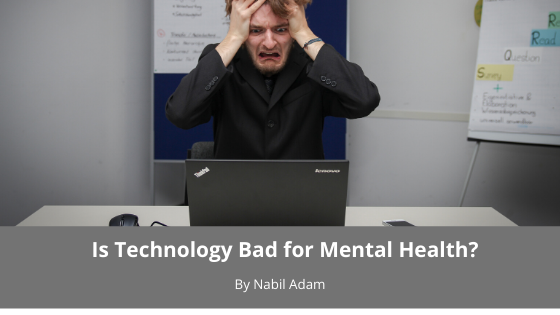
Most of us recognize that too much of any one thing is generally bad for us, but when it comes to technology, we struggle to limit our interactions. Technology is so prevalent in our society that it’s difficult to escape. Even our children are enamored with iPads and iPhones to the point that technology has taken over face-to-face interactions. The question is, is technology really detrimental to our mental health, and if so, how much is too much?
Even just skimming the research, we find some startling findings. One University of Michigan study reported that using Facebook correlated to a decrease in overall life satisfaction and happiness. Another study, done in Sweden by the University of Gothenburg indicated that heavy cell phone usage in young adults was linked to symptoms of depression. Two studies done by Australian researchers at Australian Catholic University examined the connections between social anxiety and depression and different forms of internet activity. The study found that during the years between eighth and twelfth grade, increased use of the internet led to higher rates of significant mental health problems. These studies and many more indicate that there is a strong correlation between increased technology usage and mental health concerns.
Despite these studies, we also realize that technology can be a great thing. Advances have allowed us to treat diseases in new and more efficient ways, allowed us to connect with others whom we otherwise would not be able to, and placed an abundant wealth of knowledge right at our fingertips. There are positive aspects of technology that can’t be overlooked.
So, where do we cross the line between acceptable, beneficial, or at the very least benign consumption of technology and harmful levels?
There is no simple answer. Just as human beings are complex creatures, we all process our technology usage in varying ways. There are just too many moving variables to definitively say, “anything beyond X hours is dangerous.” Each individual must determine their own limits, or in the case of parents, they must determine the appropriate duration for their children. While there is no hard and fast rule to determine how much is too much, it comes down to when the cons of usage begin to outweigh the pros. We must consider at what point does negative affect kick in and override any benefit we may receive from using the technology. Once our screen usage begins to interfere with our ability to address our own basic needs like food, hydration, and sleep, we must be aware enough to set limits. We must power down for a while; otherwise, we risk disturbances to both our physical and mental health.

